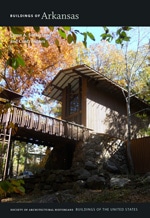The boom that accompanied the establishment of the Singer Manufacturing Company plant also brought a housing crisis. There were two major employers in Trumann by 1908: Singer and the Springfield Cooperage Company, also a mill. The companies divided the town into two distinct communities, one on each side of the railroad tracks. On the east side of the tracks, the Springfield company provided housing, electricity, and other services to its employees. On the west side of the tracks, the Singer Company owned an eighty-acre tract on which was located housing for its employees. Singer supplied electricity, supported a fire brigade, provided tennis courts and other facilities, and sponsored a baseball team. Some of the shotgun houses the company built retain their original form and finishes, notably those along the south side of Oak Street and two houses on Speedway. Others have been modified slightly, with new siding or the addition of new windows or a screen porch, while many have changes that involve additions. On the north side of Oak Street are newer houses and an apartment building, all of which reflect the same architectural forms and scale of the shotguns.
You are here
Singer Company Workers’ Houses
If SAH Archipedia has been useful to you, please consider supporting it.
SAH Archipedia tells the story of the United States through its buildings, landscapes, and cities. This freely available resource empowers the public with authoritative knowledge that deepens their understanding and appreciation of the built environment. But the Society of Architectural Historians, which created SAH Archipedia with University of Virginia Press, needs your support to maintain the high-caliber research, writing, photography, cartography, editing, design, and programming that make SAH Archipedia a trusted online resource available to all who value the history of place, heritage tourism, and learning.









